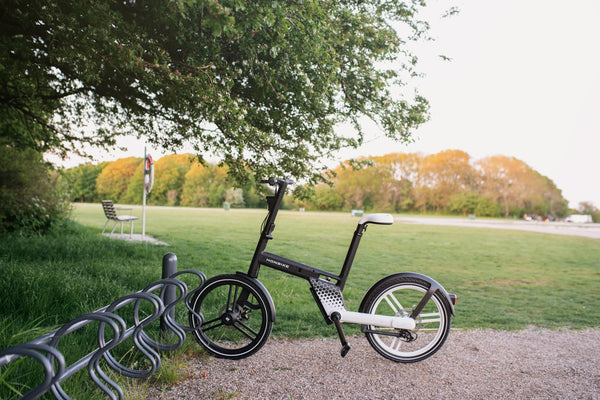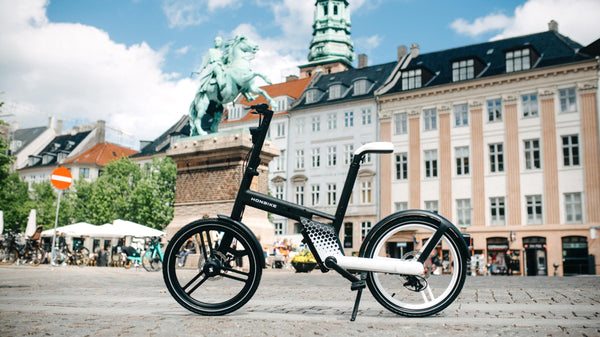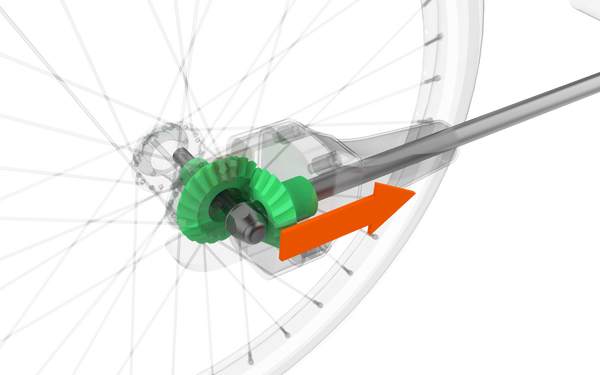Share Article
Shaft Drive Electric Bikes: Everything You Need to Know
Contents
If you’ve ever wondered about what the next evolution of the traditional bicycle will look like, chances are good you’ve thought of a shaft-driven bicycle without even knowing it. Although they were invented over a century ago, shaft drive bikes were mostly supplanted by chain-driven bikes with sprockets and derailleurs because the technology was easier to manufacture, and riders were interested in many possible gear ranges. Fast-forward to today and the world looks a lot different.
In part due to new and innovative designs by companies like uni4., but also due to changing consumer needs and wants, new entrants in the shaft drive bicycle segment have taken the biking community by storm. These bikes have reinvigorated the concept of shaft drives due to their quality, reduced maintenance requirements, and award-winning style. Read on to discover more about the benefits of these shaft drive bikes.

What is a Shaft Drive Electric Bike?
To understand a shaft drive e-bike, it helps to understand the alternatives, too. Knowing the differences between a chain, belt, and shaft drive e-bike is a good place to start. A shaft driven bicycle is a bike that uses a drive shaft instead of a chain or belt to transmit power from the pedals to the wheels. “Shaft drives” are commonly found in the automotive industry and industrial applications, where simplicity and reliability are key. Trucks were the typical use-case for shaft drives until they were applied to electric bikes.
How Shaft Drive E-bikes Work
We’ve covered what a shaft drive is and the differences between it and a traditional drive chain, but how exactly does a shaft drive e-bike work?
Shaft drive electric bikes are built to take advantage of the power the rider puts into the bike via pedaling and complement it with power from the motor by way of electricity from the battery. As the bevel gear spins at the point of the pedals, it connects to a similar but smaller bevel gear via multiple teeth. This in turn spins a rod or “shaft” which has another bevel gear on the other end at the hub of the the wheel. The wheel hub also has a bevel gear, and you guessed it, spins via connection to the shaft. This elegant system is entirely enclosed in uni4. models so that all the rider or bystanders see is simple pedaling.
Main Features of Shaft Drive E-bikes
As we’ve discussed, shaft drive bikes have a reputation for their durability, longevity, and cleanliness. Because the shaft is self-contained, it rarely ever needs maintenance itself. The shaft system adds rigidity to the swing arm on the rear frame, providing increased handling and stability Meanwhile, the absence of contaminants means the system runs cleaner than chain driven models that pick up dirt and grime.

Shaft drive bikes produce little to no noise compared with traditional bikes because the machined parts are manufactured with ultra-high precision. This also reduces any shifting in gear position that may occur while riding.
By offering additional features such as unibody frame design, electric motors, and smart sensors, uni4. has been able to lead the way in the green e-bike revolution. Although shaft drive bikes may be more expensive up-front, riders typically end up spending more on chain-driven bike maintenance in the long run. Adding in the time it takes to perform that maintenance, it’s no surprise that educated riders prefer the chain-free shaft drive system on an electric bicycle.
The final main feature of this type of e-bike is in the style category. Sleek lines, compact designs and modern accents give these bikes a completely unique look. The trendy urban look and the practicality of the shaft drive makes for a truly winning combination.
Traditional Drive Shaft VS uni4. Shaft Drive
As an emerging shaft drive e-bike supplier, the R&D team at uni4. knew the drawbacks to the traditional drive shaft needed to be addressed before applying the design to their electric bike.
Dating back to the 1800s, the traditional drive shaft was widely used, but with gears exposed outside the shell and not fully sealed. Water, dirt, sand, and other debris can easily enter the transmission system, damaging the gears, requiring frequent maintenance, cleaning, and repair. This, along with gears needing realignment made the shaft drive less popular.
To solve the issue, the uni4.’s shaft drive system uses a shaft with bevel gears on each end located inside a sealed tube, providing protection from the debris found in everyday riding. As it is sealed off from the elements, it offers a longer lifespan with improved durability, no skipping gears, and no broken chains to repair or lubricate. The uni4. drive shaft shell integrates into the bike’s frame giving the bike a sleek and minimalist look. No chains, no belts; just a clean bike with no risk of greasy chains ruining your clothes or catching your pant leg.

This specially designed integration is more than aesthetic, however, as it takes the mechanical pressures (compression, shear, and torsion) off the wheel and drive shaft gears, leaving the gears to only bear the torque of the spinning shaft. The gears are then less prone to deformation over time, which improves transmission efficiency and makes the shaft drive more durable with greater accuracy and reliability than traditional systems.
Just like new electric vehicles are getting rid of traditional gearboxes and clutches, uni4. introduced this shaft drive technology into electric bicycles, using an electric motor and various sensors to enable intelligent speed and power management. uni4. HF01, a chainless & folding electric bike, is a prime example of this impressive technology at work.
Conclusion
Looking ahead to this increasingly competitive era of electric bikes, most reputable e-bike manufacturing companies work tirelessly to produce high-power & long-range electric bicycles. uni4. does the same and more by focusing on the safety and comfort of rider, with foldable designs & maintenance-free mileage. The future is here with the uni4. shaft-drive e-bike. Fun to ride, easy to own.


























Leave a comment